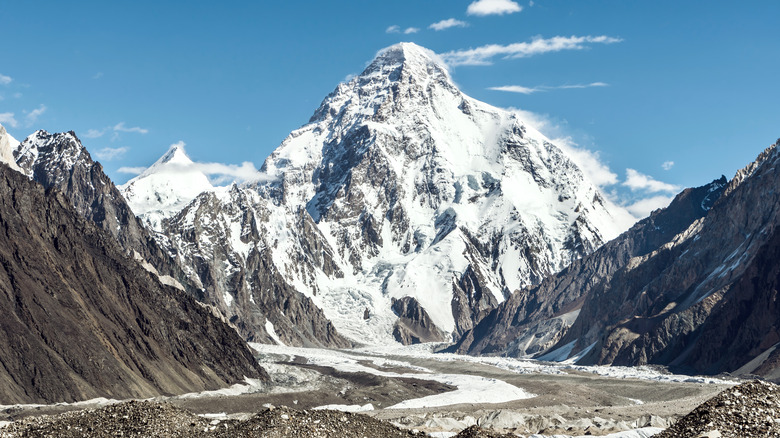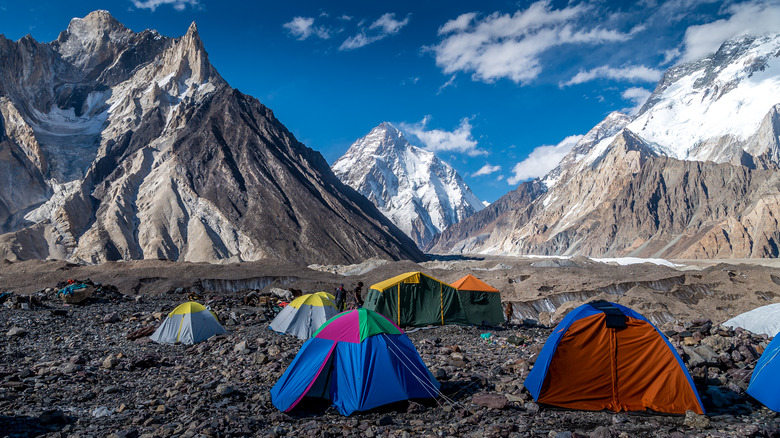This Mountain In The Middle East Is One Of The Most Dangerous Places On Earth
Looming above the other peaks of the Karakorum Range on the Chinese-Pakistan border is K2. Best known as the second-highest mountain peak in the world, K2 holds another, more sinister distinction: It's one of the most dangerous mountains in the world.
K2's base sits at 15,000 feet above sea level and rises to 28,251 feet (8,611 meters) at its peak (via Britannica). This makes it what mountaineers refer to as an "Eight Thousander," one of 14 mountains worldwide more than 8,000 meters high (via Mountain IQ).
According to Aljazeera, since 1954, 87 people have lost their lives while attempting to climb K2. Only 377 have ever reached the summit. Compare this to 9,000 who have summited the world's tallest peak, Mount Everest. A 2013 report from NASA calculates the estimated fatality rate when climbing Mount Everest is 4%. That same report placed the death rate of those attempting to climb K2 at a staggering 29%.
The dangers facing those attempting to climb K2
Climbing any mountain is a dangerous endeavor, but there are a few aspects that make K2 especially treacherous. It is home to exceptionally inhospitable weather. Winds whip across it at speeds of 124 miles per hour (200 kilometers per hour) and temperatures dip down to minus 76 degrees Fahrenheit (minus 60 degrees Celsius). This is why attempts to summit K2 in winter are ill-advised, and only eight winter expeditions have been attempted (via Aljazeera).
Even setting aside the K2's propensity for horrific weather, the obstacles that await climbers present their own dangers. They have names like House Chimney, Black Pyramid, and the Shoulder, each presenting its own set of challenges to any mountaineer who comes face-to-face with them. However, the most notorious part of the ascent is known as the Bottleneck. It's a steep gully surrounded by sheets of glacial ice that are prone to collapse (via Aljazeera).
Contrary to what most would likely assume, a K2 expedition doesn't get any safer upon reaching the summit. When climbing a mountain peak exceeding 8,000 meters, the descent can be more dangerous than the ascent, according to Vanessa O'Brien (via Aljazeera), the first British-American woman to summit the mountain. She states that 85% of deaths happen during a descent because climbers have used most of their energy getting to the summit and do not leave any for the climb down.

